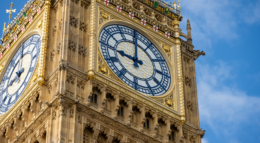
Labour's remaining Red Wall may yet fall
Labour's Red Wall crumbled in 2019, but parts of it weathered the storm. Those outposts may yet fall with Hartlepool being an early indicator, argues Craig Snow.
It's widely assumed Labour hit rock bottom in the 2019 General Election, and that the Tories hit their high-water mark. Labour's calamity was quickly epitomised by the familiar factoid of it being the worst result since the 1930s. For the Tories, meanwhile, the focus was on it being 'the best result since Thatcher's third victory in 1987' and on the remarkable feat of the governing party having gained seats in their third election.
The framing of the next General Election was thus quickly described as the Tories attempting to hold onto as much of a majority as possible, and Labour trying to make enough in-roads to give them a shot at government, if not in 2024 then in the General Election after that. It's easy to see why this might be the case: Corbyn is gone, replaced by someone the public may not have warmed to but who they at least see as significantly more Prime Ministerial; and Brexit has 'been done' and will, potentially, be a largely defused issue. The perfect storm came and has now gone, so the argument goes.
Furthermore, the gap between the two parties was so large in 2019 that even a modest narrowing – be it the Tories dipping below the remarkably high (by modern standards) 44.7% of the vote they achieved, or Labour creeping above 33.0% – will at the very least result in a much-reduced Tory majority.
This is not the foregone conclusion assumed by political commentators. Indeed, there are at least two reasons why the Tories could well gain currently Labour-held seats, and even gain enough there to offset losses to the SNP and Labour elsewhere.
The first reason this may prove to be the case will be familiar to political anoraks – boundary changes. We won't know until final proposals are made and then poured over by psephologists how this will impact seat totals, but Electoral Calculus estimates we can expect the Tories to gain around 15 and Labour lose 9.
The second reason revolves around the collapse of Brexit Party/Reform UK's support. The party squanders on 2% in polls – not a far cry from the 2.1% achieved at the General Election you might think… except it is.
In 2019 the Brexit Party contested just 275 of the 632 British seats available in Parliament. 15 of the 275 seats were in the more left-leaning, pro-EU Scotland, further masking their actual national level of support. That 2.1% vote share figure is deceptive and a more illustrative one for the purposes of this piece is 5.5%. That's the share of the vote the Brexit Party achieved, on average, across all of the seats the party actually contested.
From this we can see the party has lost around 60% of its support nationally. Not all of that support flows to the Conservatives, but a lot of it does.
We see in polling for the upcoming Hartlepool by-election how this could all play out in many of the newly marginal Labour/Conservative constituencies:
Focaldata:
(changes from 2019)
Labour – 39% (+1.3)
Conservative – 36% (+7.1)
Reform – 9% (-16.8)
Survation:
(changes from 2019)
Labour – 42% (+4.3)
Conservative – 49% (+20.1)
Reform – 1% (-24.8)
The now Reform UK's support has all but evaporated according to Survation. Some of it going to Labour, but most of it going to the Conservatives. The trend is clear and very encouraging for the Tories.
Now, constituency polls are notoriously unreliable, and Labour could hold Hartlepool and then again in 2024. This is what you'd expect – it's a Labour seat with a majority of 3,595 in 2019 and 7,650 in 2017. That it's even competitive for the Tories is a very worrying sign for Labour; it should be a fairly comfortable hold. And here's the killer stat for Labour: Hartlepool is way down the list of Tory target seats at 44. Of the 43 seats ahead of it on the target seat list, 36 are Labour-held.
Labour's misery doesn't end there either. The Brexit Party performed particularly well in Hartlepool in 2019, but the seat is far from unique. Let's go back to that Tory target seat list. Of all of those seats, how many have majorities smaller than the number of votes The Brexit Party achieved? The answer: 41, all but one of which are Labour-held – it's what remains of the so-called Red Wall. The Tories could benefit from the collapse in these seats in 2024, taking many of them from Labour even as the latter increases its vote share nationally.
Numerous events could throw a wrench into these calculations – and there's always the risk of sudden shifts in public mood. Nonetheless, there remains a huge opportunity for the Tories to gain seats they fell short of in 2019, and remarkable vulnerability still for Labour in what were traditionally its heartlands.









